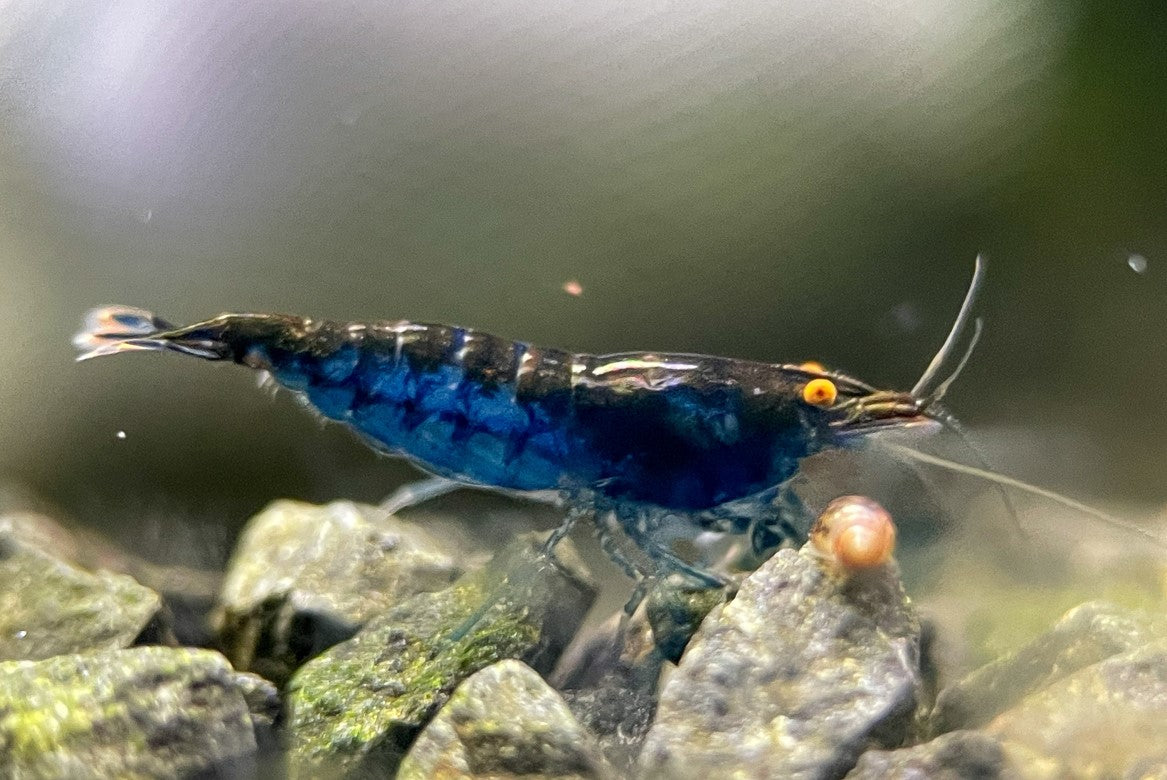Neocaridina "Blue Dream" OE
Neocaridina "Blue Dream" OE
Quantity discount
Quantity discount
Blue Dream orange eyes (OE) Mid Grade blue colored animals that have variable proportions of light blue, dark blue and black. As a result, each of the animals is unique. It is a fairly recent cross between Black Sakura OE and Neocaridina Blue Dream, so it is advisable to select this line for its dark blue colouring. The orange eyes form a great contrast on the blue-black body.
How stable is this line? Our Blue Dream orange eyes line is still quite young and is currently one of the more unstable lines. If the animals are mated with each other, 100% of the offspring will have the orange eyes, about 20% of the animals will have an opaque blue color with no black component (high grade). About 60% are parent stock (Mid Grade) and another 20% are all black like the Black Sakura used to cross this line. These are estimates.
Neocaridina with orange eyes? For about 2 years we have been offering offspring of our Neocaridina breeding lines with orange eyes (OE). The inheritance of the orange eyes is stable. From the outside, the orange eyes of the Neocaridina can be distinguished from the orange eyes of the tiger shrimp, as they have a dark spot in the middle, which may indicate residual pigment. We published a detailed report on these animals in the Caridina magazine (issue 2/2022). You can find more about this topic here .
Release size: Release animals have a minimum size of 0.8 cm, i.e. shortly before sexual maturity. If sexually mature animals are handed over, attention is paid to an even sex distribution.
General information on keeping and breeding: Like all dwarf shrimp of the Neocaridina genus, these animals are very adaptable and can usually be kept in tap water (18 - 26 °C) without any problems. In our facility, the tap water has the values: pH 7.6, gH 10; kH 9, conductivity 600uS, 22 °C. The animals feed on conventional fish food, algae growth, dead animal and plant material. They are therefore the best leftover-cleaners and contribute to the biological balance in the aquarium. The socialization with small and medium-sized aquarium fish can work, but it is advisable to offer sufficient hiding places such as moss and roots. Under optimal conditions, animals quickly grow into lively colonies.
Split




Don't miss any updates on our breeding projects!
Receive updates conveniently via email.




